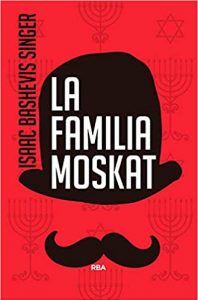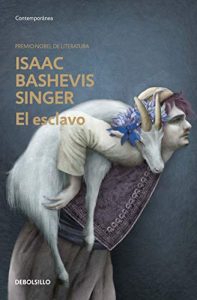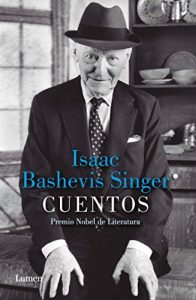The most recognized of the Singer brothers focuses that reverential respect towards literature in the Yiddish language, a literature suspended in time, in that XNUMXth century, the culmination of persecution and anti-Semitism from end to end of Europe and the world.
Later came many other narrators of remote Jewish evocations but already in other languages, such as Philip Roth Or until Paul auster. But that narrative that even in its translation maintains an aroma of Jewish idiosyncrasy remained anchored in last and glorious representatives such as the Singer brothers, led by Isaac.
His books are viewed like a millennial chronovisor of the world from wandering spirits moved by the most essential desires for liberation. Nothing is more defended at all costs than what is felt as one's own when one is stripped of everything. There is no stronger commitment than perseverance in identity when it is threatened with death.
It is the fate of the human being perfectly reflected in the becoming Jewish and in his language. That's why read to Isaac Bashevis Singer it is more than just a reading exercise.
Top 3 Recommended Books By Isaac Bashevis Singer
The Moskat family
"Being" is not "being", as he rightly insists on differentiating the Spanish language. In fact, one concept is light years away from the other, as if orbiting in some possible antipodes of the universe. The Jewish fact in history is that indestructible "being" that we find in this novel of generations that are as disparate as they are identical despite changes for good or fatal.
Because beyond the space where "one is", far above all the damage sought and attempts at extermination, there is always being, in this case, being a Jew.
The Moskat family is a magnificent chronicle of the Jews of Warsaw from the early 1939th century until the moment when the Nazis set out to occupy the city in XNUMX: the evocation of a society and a culture that would be devastated, before the catastrophe.
In it appear all the layers of a complex society populated by strong personalities: mystical philosophers, businessmen, staunch Zionists, traditionalist rabbis, marginal painters. The portrait of this civilization, straddling ancient customs and modernity, is extremely rich, both due to the diversity of characters from several generations and the intensity with which they are described.
The slave
Even the most assumed tradition and interiority of an author like Isaac Singer can be confronted in the novel with its most marked contradictions. In this historical novel, perhaps even more ancient to make the contrast more visible, we immerse ourselves in the crystalline illusion of the human being to make everything flow like a river bed in spring. Except that no one is able to watch the river go by without longing for that bath that will never be repeated and that is intended to be denied to others.
Hundreds of Jewish communities have been destroyed by the Ukrainian Cossacks in XNUMXth century Poland. Jacob, a cultured and pious man, resident of the city of Josefov, flees the massacres, but is captured by bandits and later sold as a slave to a farmer in a town nestled in the mountains.
It is there, now converted into a stable boy, where he meets Wanda, his master's daughter, with whom he falls madly in love. But the laws of the time, both those of the Poles and those of the Jews, prevent the love of both and also their marriage.
The slave is an astonishing novel that vehemently portrays the tribulations of a man who seeks to escape from the rough bonds that hold him down.
Tales
I always say. Every writer must be confronted with the story or the tale. There are those who assume it as the natural challenge, as the process towards longer narratives. Others, on the other hand, arrive later, as a temporary stop until the next novel or essay.
In Singer's case, the story ran in parallel, with that naturalness of someone who only does it to tell stories.
An anthology of forty-seven stories selected by the author, the great representative of Yiddish literature, which includes his most famous stories: "Gimpel the Fool", "The Spinoza on Mercado Street" and "A Friend of Kafka". among others.
The forty-seven stories in this anthology, selected by Bashevis Singer himself from a total of almost one hundred and fifty, comprise those included in the first and now classic compilation "Gimpel, the fool," from 1957, plus those published up to 1981.
Within this anthology are supernatural tales such as "Táibele y su demonio" and "El violinista muerto"; realistic pictures of life in Warsaw and in the shtetlej from Eastern Europe, such as the classics "A Friend of Kafka" and "The Spinoza of Market Street"; as well as "Old Love" and "The Reunion", which tell us about the Jews displaced from that old world to the new, from the East Side of New York to California and Miami.
Some stories that account for the myths and worldview of a culture that was annihilated during the Second World War. These pages take place in a supernatural, wild, endearing as well as disturbing universe, which draws as much from the oral tradition of the life of the Jewish communities of rural Poland in the years before the outbreak of the war, as from the most dark obsessions and preoccupations of the prodigious mind of its author.



